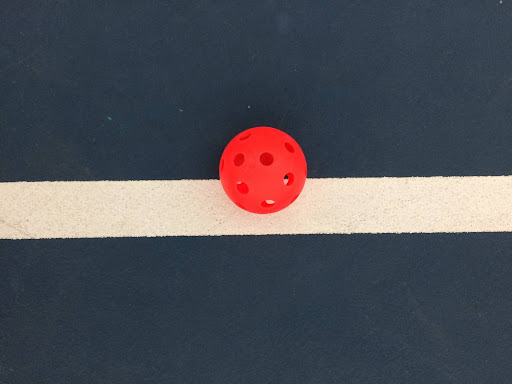Pickleball is known for its fast-paced action and strategic play, which offers players many different options for shot placement.
While playing down the line can be an effective strategy in certain situations, it is not without its risks. The net is designed to sit two inches higher on either end, so the lowest part of the net is in the middle, sitting at 34 inches high.
Let’s explore the potential pitfalls of consistently opting for the down-the-line shot in pickleball and discuss how you can navigate these challenges.

Image credit: Getty Images
Limited Court Coverage
Choosing to play down the line can limit your court coverage, especially if your opponent is quick on their feet. While it may catch your opponent off guard initially, a savvy player will adjust their positioning to cover the sideline more effectively, leaving you vulnerable to cross-court shots or lobs that exploit the open space.
-Feb-28-2024-01-51-23-0197-PM.png?upscale=true&upscale=true&width=512&height=494&name=unnamed%20(1)-Feb-28-2024-01-51-23-0197-PM.png)
Image credit: Pickleball University
Predictability for Opponents
Consistently opting for down-the-line shots can make your playing style predictable for observant opponents.
If your opponents recognize your preference for this type of shot, they may start positioning themselves accordingly, anticipating your next move and potentially gaining a strategic advantage.
One of the most effective counter shots to a down-the-line dink or volley is the “erne”. An erne is when a player jumps over (to avoid) the non-volley zone to hit a volley.
This type of shot often catches the other person off guard, as their head is down to hit their shot.
Defensive Challenges
Playing down the line can put players in a defensively challenging position. The angle of effective shots often requires players to be closer to the sideline, making it harder to defend against wide-angle returns or quick, cross-court shots.
This defensive vulnerability can be exploited by opponents who recognize your tendency to play down the line.
Narrow Margin for Error
Playing down the line leaves players with a really narrow margin for error. The court's sidelines serve as strict boundaries, and any deviation from the intended trajectory can result in the ball being out of bounds.
Unlike shots aimed towards the center of the court, down-the-line shots demand greater accuracy, making them susceptible to unforced errors.

Image credit: Sara McInnes
Angle Limitations
The down-the-line shot limits the angle at which the ball enters the opponent's court, making it easier for opponents to predict the trajectory and respond effectively.
This lack of variation in shot angles can diminish the element of surprise, allowing opponents to prepare and counter your shots more efficiently.
Balancing Strategy and Risk
While playing down the line in pickleball can be a valuable part of your strategy, it's essential to balance this approach with versatility in shot selection.
Being aware of the risks associated with this tactic allows players to make informed decisions on when and how to deploy down-the-line shots.
Incorporating a mix of shots, including cross-court plays and dinks, can keep opponents guessing and contribute to a more well-rounded and effective playing style.
In the dynamic world of pickleball, understanding the risks and rewards of various shot selections is key to becoming a formidable player.
By staying mindful of the potential pitfalls of playing down the line, players can refine their strategies, enhance their overall game, and enjoy a more competitive and fulfilling experience on the court.
This article was taken from our 'Control the Kitchen' Newsletter, if you're interested in receiving more content like this, please feel free to sign up using the subscribe section located at the bottom left of this page (or underneath the article if you're on mobile), thanks!